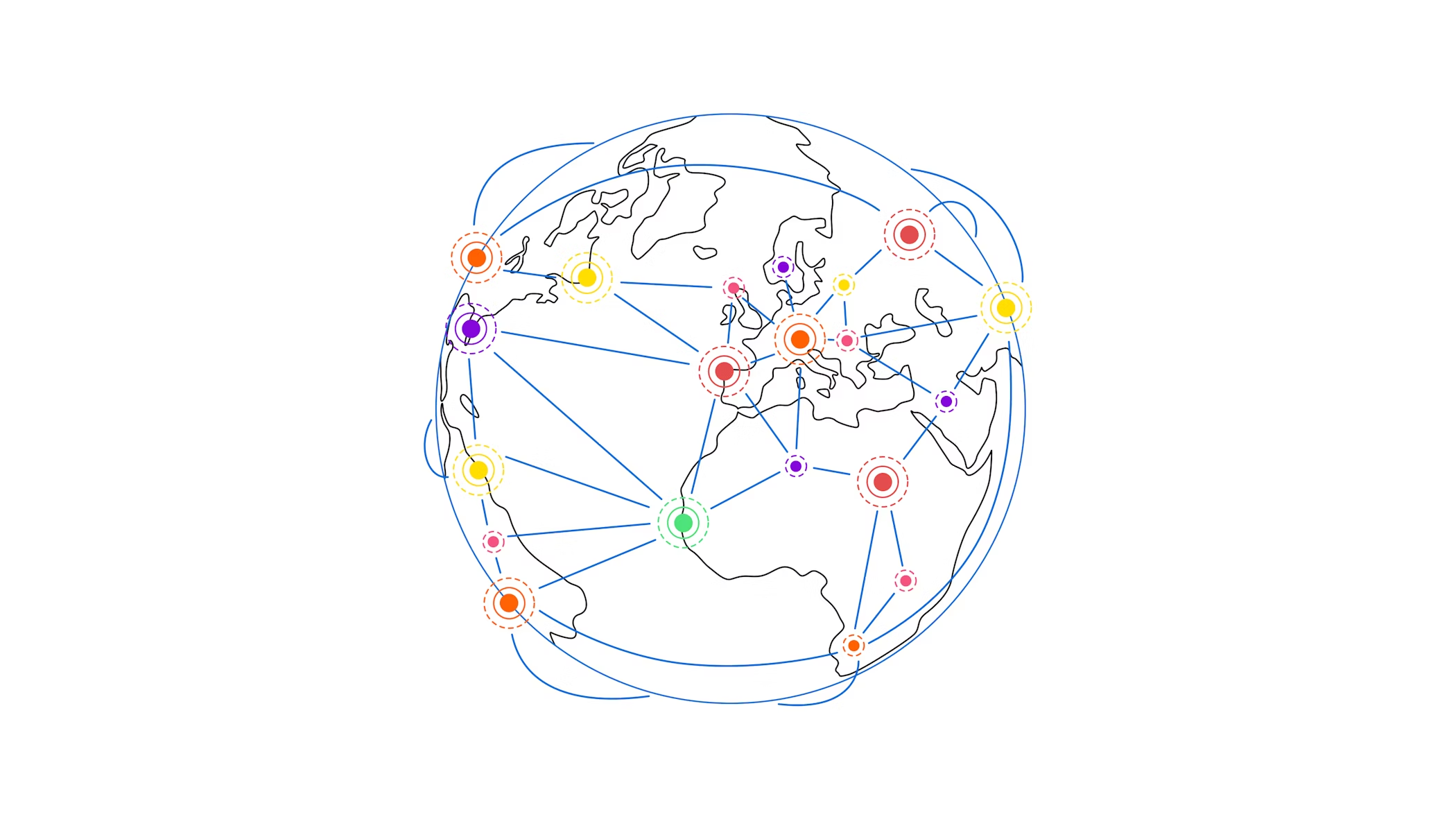Mastering Blockchain: How Crypto Nodes Work Complete Guide 2024
Welcome to your “how crypto nodes work complete guide 2024”! Here, we cut through the complexity to provide a clear and practical understanding of nodes in the blockchain network. From their day-to-day operations to their pivotal role in maintaining a decentralized and secure cryptocurrency landscape, we cover it all. Whether you’re a beginner or looking to deepen your knowledge, this guide equips you with the essentials of node functionality and its implications for the network’s health.
Key Takeaways
- Crypto nodes are essential components of blockchain infrastructure, maintaining current copies of the blockchain, validating transactions, and ensuring the integrity and security of the network.
- Nodes differ in their roles and capacities within the blockchain ecosystem, including full nodes that maintain complete copies of the ledger, light nodes designed for efficiency, and mining and validator nodes responsible for creating new blocks and maintaining network security.
- Running a crypto node involves considerations such as selecting the right blockchain, configuring the node software, managing data privacy, and implementing robust security measures to protect network integrity.
Unlocking the Basics: What is a Crypto Node?

At the heart of every blockchain network beats a complex system of crypto nodes, each a cornerstone ensuring the blockchain’s pulse remains strong and steady. A crypto node is a computer that connects to a blockchain network, tirelessly maintaining a current copy of the blockchain, validating transactions, and relaying them throughout the network. These nodes are the arbiters of validity, using digital signatures and transaction history to uphold the blockchain’s integrity. They are the guardians of continuity, securing the blockchain by validating transactions and upholding network rules.
Nodes act as the network’s repositories, storing and preserving blockchain data to maintain the ledger’s historical tapestry.
The Anatomy of a Crypto Node
Delving deeper into the blockchain’s architecture reveals the complex anatomy of a crypto node. This intricate system is the engine room of the blockchain network, where each node is a cog in the vast machine, distinguishable by a unique identifier that sets it apart from its peers.
We’ll now delve into the essentials of node software, hardware requirements, and data management that sustain the pulse of the blockchain network.
Node Software Essentials
The node software acts as the operating system of a crypto node, vital for processing transactions and handling blockchain data within the network. Like a skilled conductor, the software orchestrates the smooth flow of blockchain activities, from the transmission of transaction data to the synchronization of the ledger across the blockchain network.
The software guarantees that each node fulfills its role in the decentralized symphony, preserving the harmonious operations of the blockchain.
Hardware Requirements for Nodes
Effective performance of a node is reliant on a robust hardware foundation. A modern operating system is the stage upon which the node performs, requiring at least 500 GB of SSD storage and 8 GB of RAM to maintain the vast ledger that is the blockchain. Additionally, the node needs sufficient processing power to manage its copy of the distributed ledger, a constant reminder of the network’s operational history. A strong, reliable broadband internet connection is the node’s lifeline, facilitating real-time transaction validation and ledger synchronization.
Data Management within Nodes
Various ingenious methods are employed by nodes to manage the blockchain’s vast data. Pruned nodes optimize storage by selectively forgetting parts of the transaction history, like a librarian who only keeps the latest volumes on the shelf. Light nodes, on the other hand, carry just the essentials – the block headers – making them nimble and efficient, especially on devices with limited storage.
Archive nodes, the storied historians of the blockchain, bear the weight of the entire history, ensuring that no chapter of the ledger is lost. These nodes synchronize with the network, validating transactions and backing up data to guard against loss.
The Workings of Decentralized Networks Through Nodes

Serving as the backbone of the blockchain’s decentralized networks, nodes are the custodians of its democratic essence. They ensure the ledger remains incorruptible, with no alterations slipping past the consensus. By holding identical copies of the ledger, nodes create a trustless environment, verifying transactions based on consensus rather than relying on a central authority.
Decentralization through nodes offers several benefits:
- Data is reconciled across the network, reducing the risk of loss or corruption.
- Diminishing the reliance on any single entity fortifies the network against systemic failures and showcases the strength in the collective.
- Distributing resources across multiple nodes improves network service performance.
- It lessens the chance of catastrophic failures.
Maintaining a secure, transparent, and accountable network is dependent on blockchain nodes communicating and reaching a consensus on the blockchain state.
Types of Nodes in the Blockchain Ecosystem
Within the blockchain ecosystem, a diverse array of nodes each plays a specialized role in maintaining the network’s vitality. Like a well-oiled assembly line, nodes such as:
- Full nodes
- Light nodes
- Mining nodes
- Validator nodes
work in harmony to uphold blockchain protocols and secure the data they bear.
Full nodes contain the whole ledger, while light nodes offer a compact version for efficiency. Mining nodes contribute new blocks, and validator nodes stake their claims in the network’s future. Each type of node is a testament to the blockchain’s adaptability and resilience, ensuring smooth operation and data integrity.
Full Nodes: The Network’s Stewards
As diligent stewards of the blockchain network, Full nodes:
- Maintain a complete copy of the blockchain ledger
- Act as the final arbiter of transaction and block validity
- Are independent verifiers, cross-referencing each transaction against the blockchain’s history
- Ensure that only legitimate transactions are added to the blockchain.
When miner nodes create a new block, it’s the full nodes that broadcast the news across the network, validating the block based on the established consensus rules. Their role is paramount in maintaining the integrity and security of the entire blockchain, making them indispensable guardians of the network.
Light Nodes: Efficiency and Accessibility
Known also as SPV (Simplified Payment Verification) nodes, Light nodes provide efficiency and accessibility within the blockchain ecosystem. These nodes operate with a light touch, designed for devices that can’t shoulder the full blockchain’s weight, syncing faster and requiring significantly less storage than their full node counterparts,. Ideal for mobile devices and everyday transactions, light nodes ensure that the blockchain’s reach extends to the corners of everyday life, enabling participation without the need for extensive resources.
Mining and Validator Nodes: Consensus Builders
Shaping the network’s future one block at a time, Mining and validator nodes serve as the blockchain’s masons. Mining nodes exert their computational might to create new blocks, solving cryptographic puzzles to extend the blockchain and earning rewards for their labor,.
Validator nodes, on the other hand, stake their cryptocurrency to validate transactions and maintain the network’s security, a testament to their commitment to the blockchain’s prosperity. These consensus builders not only reinforce the network’s security but also contribute to its democratic structure, ensuring that each transaction adheres to the network’s collective agreement. This process is known as proof of stake.
Setting Up Your Own RPC Node

A blend of technical savvy and strategic decision-making is required when venturing into the world of blockchain and setting up your own RPC node. The process involves choosing the right blockchain, configuring node software, and connecting with the network—a journey that starts with the initialization of a new directory for the blockchain project,. Managed node hosting services like Google Cloud’s Blockchain Node Engine simplify the path, handling deployment, updating, and monitoring, so you can focus on your node’s performance.
The cornerstone of node setup is securely backing up critical data such as private validator keys and wallet mnemonic phrases, which ensures resilience in the face of potential challenges.
Choosing the Right Blockchain
Selecting the appropriate blockchain for your RPC node is akin to choosing a plot of land to build your home. The decision hinges on various factors, including the specific requirements and capabilities of the blockchain, as well as the synchronization modes that can affect data processing speed and storage volume,.
Careful consideration of the transaction types to be validated and the network’s security ensures your node not only meets your needs but also contributes positively to the broader blockchain ecosystem by helping to verify transactions.
Obtaining and Configuring Node Software
Equipping your RPC node with the right software is a critical step in your blockchain journey. Services like Google Cloud’s Blockchain Node Engine offer a streamlined path to deploying nodes, providing a fully managed hosting service that lifts the burden of infrastructure management. Whether self-hosting or using third-party providers, considerations such as resource control and integration with services like AWS are paramount.
Given the complexity of operations an RPC node must handle, adequate computing power is essential for rpc nodes, as is managing software dependencies through tools like the package.json file in Node.js applications.
Enhancing Security and Privacy for Nodes
Security and privacy hold paramount importance in the digital age, especially when operating a blockchain node that is crucial to the network’s integrity. Node operators must be vigilant, implementing various measures to protect against unauthorized access and ensuring the privacy of the data within their care.
From robust physical security for on-premises nodes to the use of providers like NOWNodes, which offers secure, fast API key-based connections, each step towards enhanced security is a step towards a more resilient blockchain network.
Security Measures for Node Operators
A range of security measures can be deployed by node operators to fortify their digital fortresses. Some of these measures include:
- Physical security
- Network segmentation
- Hardware security modules
- Firewalls
- Encrypted storage
- Keyring configurations
These measures serve as shields that protect the node from digital onslaughts, control traffic flow and access to the node’s ports, and safeguard precious cryptographic keys and passwords.
Dedicated disks for node data enhance security protocols, and blockchain’s inherent cryptographic hashing and consensus mechanisms act as the ultimate defense against unauthorized changes,. Security audits and DDoS protection measures are the watchtowers, ensuring the node’s defenses are impenetrable,.
Privacy Considerations for Nodes
Nodes must be configured with privacy as a priority, recognizing that it is not just a feature but a cornerstone of blockchain technology. Deploying nodes across various regions allows operators to comply with local regulations and manage access effectively,.
Custom API keys enable refined control over who can access the node’s data, adding a layer of privacy that is essential for maintaining user trust and network integrity.
The Future of Nodes: AI and Blockchain Integration
A new era for nodes is heralded by the intersection of AI and blockchain technology, with promises of enhanced security, efficiency, and governance capabilities. AI’s optimization of node construction is revolutionizing the way transactions are validated, pointing towards a future where blockchain networks operate with unprecedented precision.
As staking nodes evolve, we can anticipate the emergence of:
- AI-driven automation
- Specialized techniques
- Integration with the decentralized finance ecosystem
- Addressing challenges such as scalability and interpretability.
Navigating Node Upgrades and Forks
Given the ever-evolving landscape of blockchain technology, it is necessary for node operators to stay adept at navigating upgrades and forks. Keeping software up-to-date is crucial for security and network compatibility. Planning for node downtime, which can last up to 40 minutes during upgrades, requires operators to schedule maintenance windows and provision multiple nodes to minimize disruptions.
Forks represent pivotal moments for blockchain networks, demanding careful consideration of factors like network consensus and the long-term viability of the blockchain. Maintenance encompasses not just client software updates but also the careful management of the Blockchain Node Engine’s business logic and infrastructure.
Running Specialized Nodes: From Lightning to Super Nodes

With the maturing of the blockchain landscape, specialized nodes equipped with unique capabilities that enhance the network’s performance have emerged. Lightning nodes, for instance, are instrumental in enabling faster transactions by establishing off-chain channels, thereby easing the blockchain’s scalability concerns. These nodes demand a persistent internet connection and sufficient computing power to securely manage multiple channels.
Similarly, master nodes take on a more sophisticated role by facilitating instant transactions and partaking in governance, with operators receiving compensation for their services. Super nodes elevate the network’s processing power, acting as the backbone that connects smaller nodes with the larger blockchain infrastructure, bolstering the network’s overall capabilities.
The Impact of Nodes on Network Health and Decentralization
Working tirelessly to maintain the health of the blockchain network and ensure its decentralized nature, nodes serve as its vigilant sentinels. Full nodes, in particular, are instrumental in autonomously verifying transactions and safeguarding the blockchain’s entire history, which is integral for the network’s stability. The cryptographic chaining of blocks by nodes fortifies the blockchain against tampering, maintaining the network’s security and data integrity.
A diverse and widespread node network is the bedrock of a decentralized network, preventing any single entity from wielding undue control and ensuring the blockchain’s democratic ethos endures.
Incentivizing Participation: Rewards and Staking in Nodes
A fundamental aspect of a thriving blockchain network is the incentivization of node operation. Staking nodes, by locking in cryptocurrency as a stake, validate transactions and adhere to the consensus model, thereby earning passive income and enhancing network security. Node operators who contribute more deeply to the network through staking are often rewarded more handsomely, reflecting the operational costs and efforts involved.
Dedicated servers for staking nodes provide performance, security, and scalability benefits that facilitate better control over the staking process. Masternodes, a step beyond full nodes, perform additional critical functions, such as network governance, and receive compensation for their indispensable services.
The Journey of a Transaction Through Nodes
Mediated by the diligent work of nodes, the lifecycle of a cryptocurrency transaction takes a fascinating voyage through the blockchain network. When a user initiates a transaction, it’s broadcasted across the network, where nodes step in to:
- Validate and verify its authenticity
- Confirm that the user has sufficient funds
- Ensure that the transaction adheres to the rules of the blockchain network
Once the transaction is validated, it finds its place on the blockchain, where it becomes a permanent and immutable record.
This journey, from initiation to validation, underscores the critical role nodes play in ensuring that every transaction adheres to the network’s stringent rules and contributes to the immutable ledger that is the blockchain.
Summary
From the basics of crypto nodes to the advanced realm of AI integration and specialized nodes, this comprehensive guide has journeyed through the pulsating heart of blockchain technology. Nodes, in their varied forms, uphold the network’s health, ensure its security, and embody the spirit of decentralization. Whether you’re setting up your own node or simply seeking to understand the blockchain’s inner workings, remember that each node, no matter how small, plays a crucial role in the grand tapestry of the blockchain ecosystem. May this exploration inspire you to become an active participant in the ever-evolving digital ledger of our time.
Frequently Asked Questions
What is a crypto node and why is it important?
A crypto node is important because it upholds the integrity and security of the blockchain by maintaining a current copy of the blockchain and validating transactions, ensuring legitimacy and adherence to network rules.
What are the hardware requirements for running a blockchain node?
To run a blockchain node, you’ll need a computer with a modern OS, at least 500 GB of SSD storage, 8 GB of RAM, and a strong internet connection. These specifications support real-time transaction validation and ledger syncing.
How do nodes contribute to the decentralization of blockchain networks?
Nodes contribute to the decentralization of blockchain networks by maintaining identical copies of the blockchain ledger, enabling a consensus-based validation process that reduces dependence on central authorities. This decentralized structure improves data reconciliation, minimizes risks of data loss or corruption, and ensures that no single entity can control the network.
Can I earn rewards by running a blockchain node?
Yes, running certain types of nodes, such as staking nodes or masternodes, can earn you rewards for validating transactions and contributing to the network’s consensus.
What happens during a blockchain fork, and what should node operators do?
During a blockchain fork, node operators should update their software, evaluate the impact on network consensus, and assess the viability of the fork. Planning maintenance windows and managing node downtime are essential to minimize disruptions.




